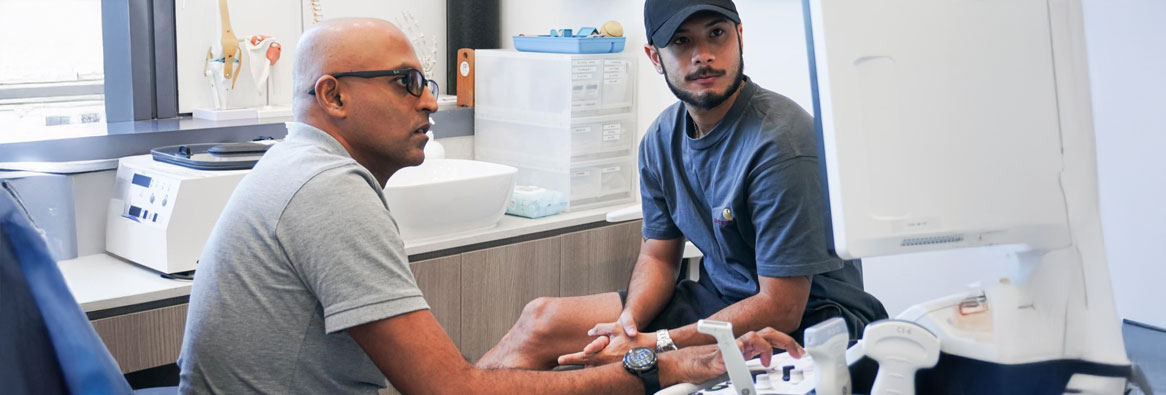What is the Tenex Procedure?
Tenex (also known as percutaneous tenotomy or fasciotomy) is a minimally invasive procedure used to treat chronic tendon and soft tissue injuries. It is particularly effective for tendinopathy and plantar fasciitis that have not responded to conservative treatments like physical therapy, rest, and injections.
How does Tenex Procedures Work?
Tenex uses ultrasound-guided percutaneous (through the skin) technology to remove damaged tendon tissue while preserving healthy tissue. It works through:
- Ultrasound Imaging: The doctor uses ultrasound to precisely locate the damaged tendon or fascia tissue.
- Local Anesthesia: The area is numbed with a local anesthetic (no general anesthesia required).
- Micro-Incision: A tiny incision (about 3 mm) is made in the skin.
- Ultrasonic Needle (Tenex Device): A specialized needle-like probe is inserted into the damaged tissue.
- Tissue Breakdown & Removal: The Tenex device emits high-frequency ultrasonic energy, breaking down and removing damaged tissue while leaving healthy tissue intact.
- No Stitches Needed: The incision is so small that it usually does not require stitches, only a bandage.
Chronic Tendon Injuries (Tendinopathy)
- Tennis Elbow (Lateral Epicondylitis)
- Golfer’s Elbow (Medial Epicondylitis)
- Achilles Tendinopathy
- Patellar Tendinopathy (Jumper’s Knee)
- Rotator Cuff Tendinopathy (Shoulder Pain)
Plantar Fasciitis & Soft Tissue Injuries
- Chronic Plantar Fasciitis – One of the most common uses for Tenex.
- Gluteal Tendinopathy (Hip Pain)
- Pes Anserine Bursitis (Inner Knee Pain)
What are the Benefits of Tenex vs. Traditional Surgery?
- Minimally Invasive – Tiny incision, no stitches, and minimal scarring.
- Quick Procedure – Typically takes 15-30 minutes.
- Faster Recovery – Most patients return to light activity within a few days to a few weeks (compared to months with open surgery).
- Preserves Healthy Tissue – Unlike open surgery, Tenex removes only the damaged tendon fibers.
- Less Pain & Swelling – Less trauma to surrounding tissues compared to traditional surgery.
- Low Risk of Complications – No general anesthesia, reduced infection risk.
What are the Recovery & Post-procedure Guidelines?
- Light activity within a few days (depends on location and severity of injury)
- Physical therapy may be recommended for gradual strengthening
- Return to sports/work in 4-6 weeks for most cases
What are the Limitations & Other Considerations?
- Best for Chronic Cases – Works well for chronic tendinopathies but may not be effective for complete tendon tears.
- Not for Severe Arthritis – More useful for soft tissue injuries rather than advanced joint arthritis.



